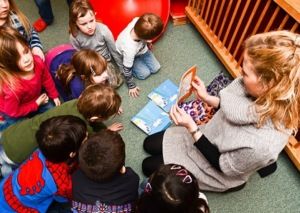News
Not quite Europe’s cheapest childcare, but not far off!
This article is more than 3 years old.
Thanks to generous state subsidies, people in Denmark spend only 8.66 percent of their income on the childcare costs of their toddlers

Not a damning report, but room for improvement (photo: flickr/Sonderborg.dk)
In most of the developing world, a lifestyle divider is a matter of life or death. It’s the people who have water and the people who don’t, the people who have guns and the people who don’t. Or it’s a source of extreme inequality, like the possession of land or oil.
In the West, it tends to get more trivial: from the US, where it’s having health insurance, to the UK, where it’s whether you can afford to send your toddlers to childcare.
In Denmark, where the lifestyle divider is whether you own a summerhouse, sending your children to daycare has always been relatively affordable thanks to generous state subsidies.
In fact, people in Denmark face the seventh lowest costs in Europe, according to a new money.co.uk report (which ranks the UK the third worst!).
Cheapest in Sweden, dearest in The Netherlands
Money.co.uk calculated the cost of childcare for children aged 0-2 as a percentage of two parents’ combined salaries, and Sweden came out on top with just 2.62 percent, followed by Nordic trio Iceland (4.36), Norway (5.51) and Finland (6.08).
Denmark failed to make it a Nordic clean sweep, finishing in seventh with 8.66 percent behind Germany (6.24) and Austria (7.36). Completing the top ten were Estonia, France and Spain.
At the other end of the spectrum came the Netherlands, where parents pay 28.36 percent of their annual salaries. Turkey, the UK, Slovakia and Greece completed the bottom five.
Strictly vuggestue costs; børnehaver would be cheaper
The average cost in Denmark is 400.49 euros per month, which equates to 17.32 percent for single-parent households.
The price of sending your child to nursery (vuggestue), daycare for 0 to 3-year-olds, recently shot up in Denmark following an increase in the number of pedagogues per infant.
At børnehave (kindergarten), where the ratio is much lower, the costs are less expensive, but money.co-uk’s report has only assessed vuggestue data.
Children remain in daycare in Denmark until they are five or six, but in other countries, such as the UK, they can start state-run pre-school at the age of three.










































